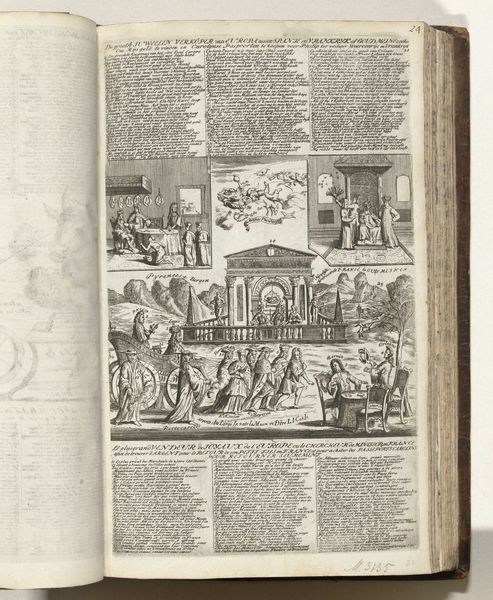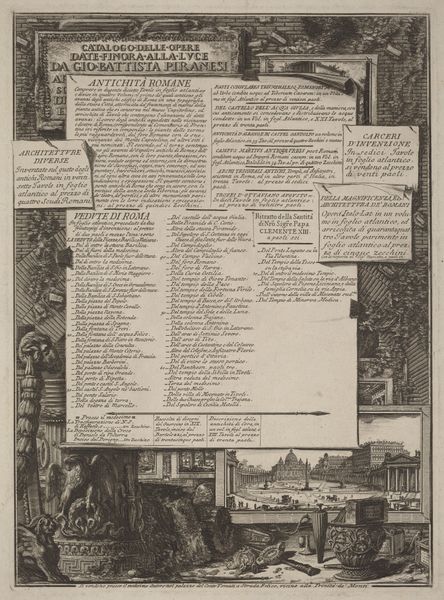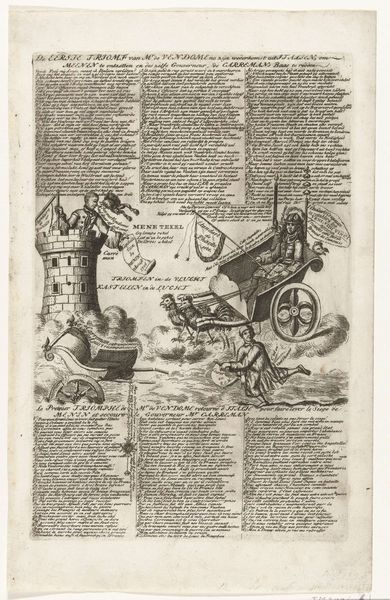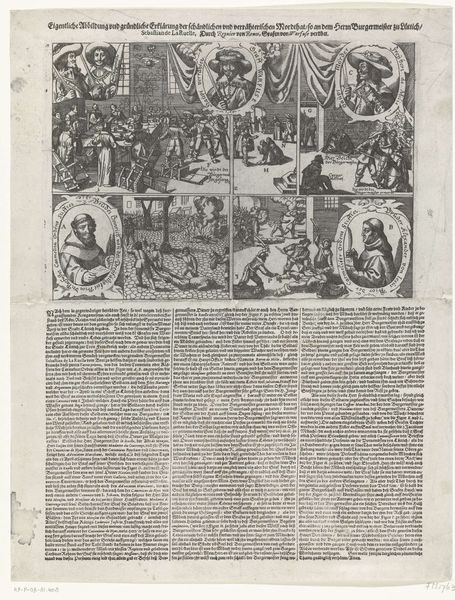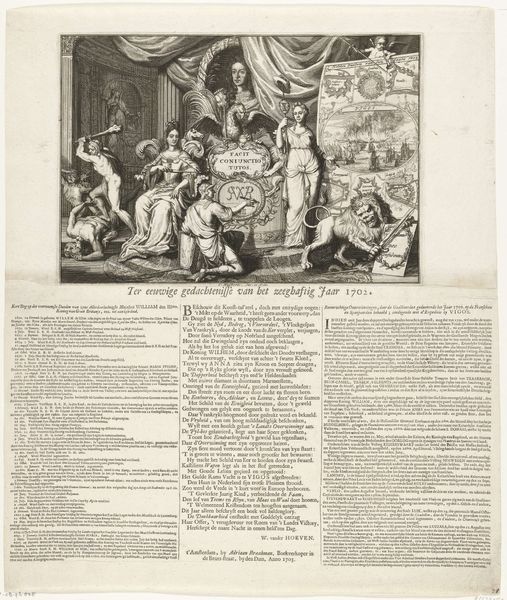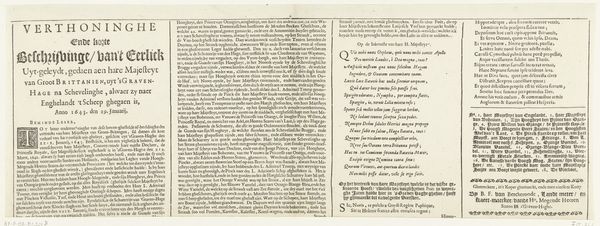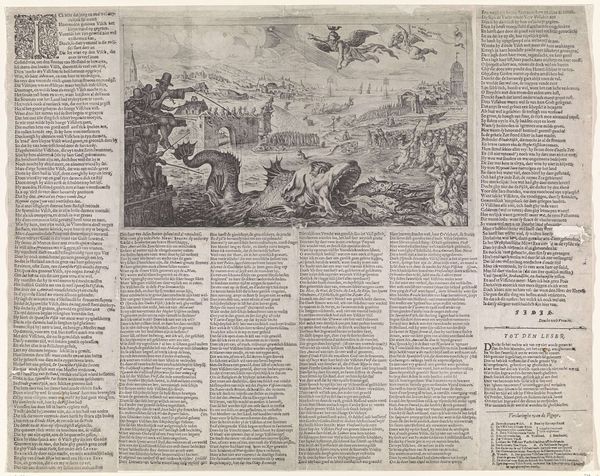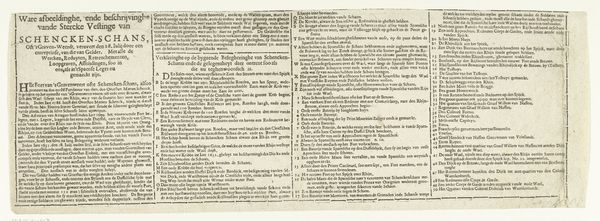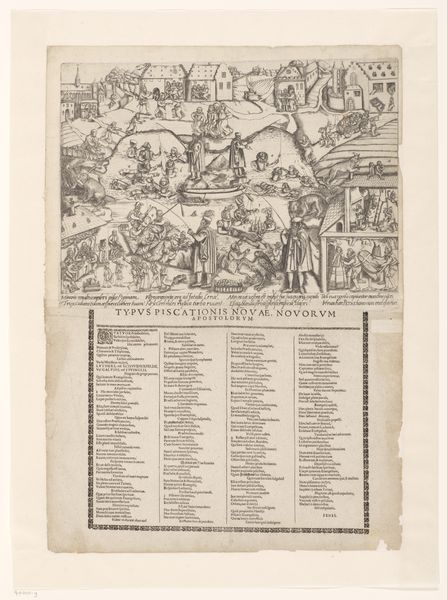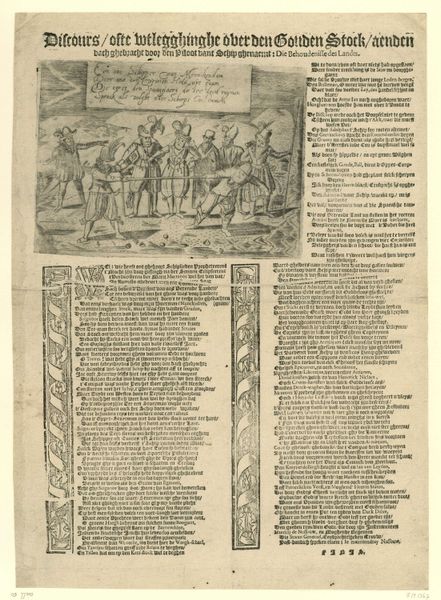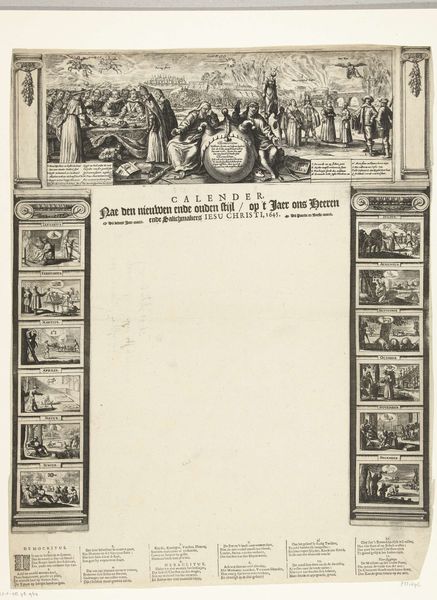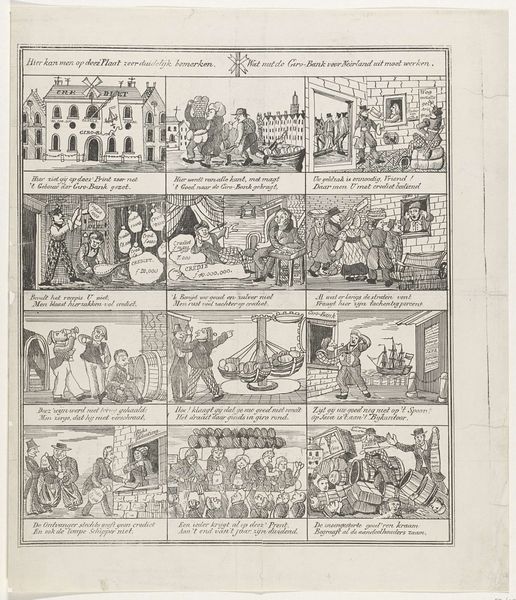
print, engraving
#
allegory
#
narrative-art
#
dutch-golden-age
# print
#
old engraving style
#
11_renaissance
#
history-painting
#
engraving
Dimensions: height 146 mm, width 372 mm, height 317 mm, width 435 mm
Copyright: Rijks Museum: Open Domain
Curator: My eye is immediately drawn to that circle of disgruntled lions in the bottom right. What do you see first when you look at this engraving? Editor: A dense story! Before even deciphering individual elements, I immediately grasp the satirical commentary baked into it. "Allegory of the Deceptive Peace Proposals in 1598," it’s called, an etching from 1598, printed anonymously. Knowing the Dutch Golden Age birthed such deliciously sharp political takes makes it even more compelling. Curator: Absolutely. There's such intricate detail here. I wonder, what were the sentiments around peace talks in the late 16th century? Was there true eagerness, or this…suspicion, this hesitation? Because, looking at this now, I find it deeply pessimistic about the proposed peace. Editor: Incredibly so. Think about the Eighty Years' War—decades of struggle for Dutch independence from Spain. This engraving serves as a visual critique of peace initiatives, portraying them as treacherous. See the animalistic figures—they are the English and French licking the boots of Spanish royalty as Dutch citizens bow, begging for mercy and aid! Even the landscape embodies a narrative of failed agreements. Curator: I'm also struck by how flat everything feels. It's packed with detail, of course, but lacks perspective. I think this serves the messaging. All events and actors exist on the same plane, weighted equally by skepticism. This adds such potency, like all moments leading up to, including, and following negotiations occur within a perpetually rigged system. Do you think there’s a figure of hope anywhere? Editor: Perhaps in the knowledge the Dutch persevered? What is more evocative here, I would say, is its capacity to incite historical memory in the face of duplicity. The act of representation then functions as its own form of agency, as resistance. Curator: True, a printed artifact meant for circulation becomes a means of protesting through satire. What a darkly clever act of subversion! Looking at the text beneath the image makes me curious what verses were printed here for wider dissemination... Editor: It is remarkable that this engraving manages to convey complex political critique—a story of enduring relevance. Let's move on to the next piece!
Comments
No comments
Be the first to comment and join the conversation on the ultimate creative platform.
